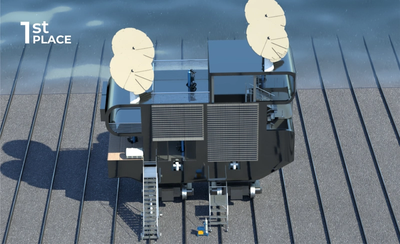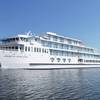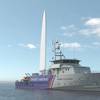Future Floating Homes: Naval Arch Students Meet the Challenge with Green Tech
Naval architecture students in Galati, Romania and Gdansk, Poland, used their technical and soft skills to compete in the final of ShipDX (Ship Design Exercise), the first naval architecture competition in Romania.
GLO Marine, the organizer of the competition, looked at current industry trends to propose the theme of this year’s edition: the concept design of a highly autonomous, self-propelled floating house, with a focus on integrating green and sustainable technologies into the smart design. The event offered cash prizes of €4,500 for the winners.
From a total of 10 teams registered at the start, only 6 teams from the two countries managed to qualify to the final: four teams from Romania and two teams from Poland.
Each team had 15 minutes to present their concepts and another 5 minutes to answer the jury in the Q&A session. The judging of the projects was performed following clear criteria that evaluated for important areas: first, general concept, aesthetics and feasibility; second, the quality of engineering work; third, green and sustainable solutions used; forth, teamwork, project management and presentation skills. The jury was composed of professors of the Naval Architecture Faculty in Galati and the Technical University in Gdansk, representatives of companies in the maritime industry that sponsored the event, such as DAMEN Shipyards, AVEVA and DMT Marine Equipment and representatives of GLO Marine, the organizer of the competition.
• First place (2000 Euros) was won by DAO Innovation, from Romania.
• Second place (1500 Euros) was won by Baltique team from Poland.
• Third place (1000 Euros) was won by Nautilus, from Romania.
The next edition of ShipDX will be announced by GLO Marine this year and will surely follow the same trend of development and innovation. ShipDX’s mission is to encourage naval architecture students to surpass their limits, to practice efficient teamwork and develop invaluable skills for their careers. Previous editions confirmed exactly this feedback from students, and despite the current environment, heavily impacted by covid-19, the organizers decided it was crucial to continue as planned and organize the competition virtually.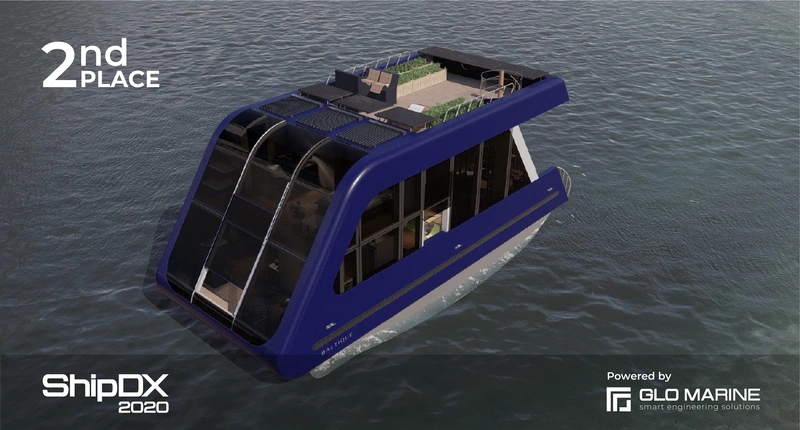 Second place (1500 Euros) was won by Baltique team from Poland. Image courtesy ShipDX/GLO MarineShipDX 2020
Second place (1500 Euros) was won by Baltique team from Poland. Image courtesy ShipDX/GLO MarineShipDX 2020
The main goal of the competition this year was to raise awareness among students about relevant concerns in the maritime industry and the technological advancements that are defining its future: depletion of resources, climate change and waste generation, met with smart and sustainable design, green energy, blue energy and alternative fuels.
“How will our industry look in ten years’ time? It is time we encouraged students to think of the impact that our design has over the environment in the long run. During these past years we have seen the adoption and use of sustainability principles in civil engineering and automotive industry. Still, the maritime industry’s rhythm of adoption is very slow,” said Liviu Galatanu and Alin Pohilca, co-owners of GLO Marine. “We are convinced that educating students to understand, respect and apply these principles is the responsibility of the private sector as much as it is the responsibility of the education system. Therefore, we decided that this year’s ShipDX theme would be to advance the principles of green energy, sustainable solutions and smart design.”
Designing The Floating Home
The theme of ShipDX 2020 was the design of a self-propelled, high-autonomous, and sustainable floating home. The students were tasked to not only propose the best conceptual solutions for green energy, such as solar panels, they will also have to explain how these solutions work in the context of their project and highlight the practical benefits.
As defined by the ShipDX 2020 contest, the floating house concept must comply with a series of limitations required by the organizers: it has to comfortably accommodate four passengers and temporarily host 20 people onboard. The vessel must be autonomous for long periods of time and be able to travel distances of 100 miles. The overall dimensions are 15 to 20 meters in length and 6 meters width. This space must include all the amenities and conveniences required for comfortable living onboard: 2 bedrooms, a living room, a kitchen and 2 terraces. The green and sustainability solutions have a dedicated category in the judging criteria and will account for an important percentage of the total score.
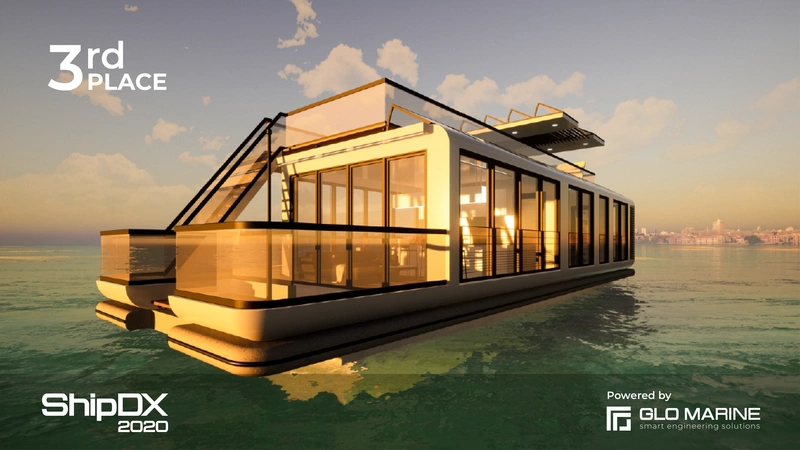 Third place (1000 Euros) was won by Nautilus, from Romania. Image courtesy ShipDX/GLO Marine
Third place (1000 Euros) was won by Nautilus, from Romania. Image courtesy ShipDX/GLO Marine



